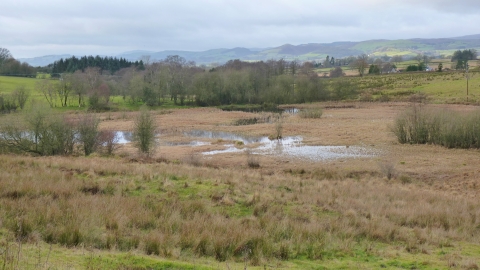Know before you go
Dogs
When to visit
Opening times
All year roundBest time to visit
May to July and September to MarchAbout the reserve
The lake in this reserve was created by damming up the stream back in the 1950's for fishing. Today, the lake is very small with much of the reserve being swamp, fen and wet woodland.
In the winter, the mire is an important roost site for large numbers of snipe, jack snipe and pied wagtail. Widgeon, teal and other water birds find the open water attractive and water rail love to hide in the tall vegetation around the edge of the water.
The summer months sees dragonflies and damselflies dancing above the water and butterflies enjoying the flowering plants and rich wetland.
Bird species include bullfinch, skylark, linnet, reed bunting and song thrush, with red kite, buzzard and raven on occassion.
Frogs and smooth newts can be found among the sedges, northern marsh-orchids, broad-leaved cotton-sedge and bog violets growing on the damp soils.
Pentrosfa Mire's rarest species is a lichen discovered on willow twigs which is new to science (a member of the Arthonia genus). Over 100 species of lichen have been found on this reserve.

